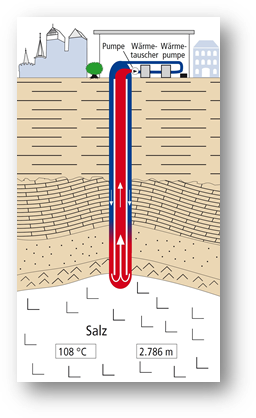Advantages
Advantages UDG Energy
The implementation of our Ultra-Deep Geothermal Energy technology has many advantages, compared to current geothermal techniques as well as wind, solar and nuclear energy. In terms of its cost/output ratio, UDG Energy is currently the most effective method of all for producing large quantities of green energy.
We list the advantages.
Advantages
1.
As a result of the closed system, there is no risk of disturbance or contamination of underground structures and, thus, of any occurrence of earthquakes, seismic disruption or underground landslide. Fully emission free.
2.
The use of high-performance thermal fluid within a closed system, leading to highly efficient thermal absorption and output, results in an energy efficiency of approximately 96,5%.
3.
Full control of the entire system, including the fluid. Thanks to the effective process technology, energy production can be increased, decreased, buffered or fully stopped within a very short period of time, which implies fully dispatchable energy. Fully emission free.
4.
UDG power stations are fully adaptable to energy needs. Per drill shaft, a UDG power station can generate from 25 MWe all the way up to 600 MWe. Combining two or more drilling shafts in a single large UDG power plant can create an even greater capacity.
5.
No more unproductive tubes (so called ‘dry-holes’), thanks to multiple production tubes capable of being used in a flexible manner (and not just one production source as is the case with the current doublet technique).
6.
Cost-effectiveness and an excellent return on investment due to the high volume of green energy production (contrary to the current doublet system) and no more risks of installations being blocked after a couple of years due to high mineralisation.
7.
Large volumes allow for low production costs per Kwh: < €0.04 kWh.
8.
Long economic life span of UDG power stations:
exceeding 50 years. Very low operational & maintenance costs.
Advantages
9.
No waste (as in nuclear energy) or chemical substances that can affect underground (drinking) water resources, as is currently the case.
10.
Can be implemented almost everywhere on land, because the technology does not depend on finding suitable hot water aquifers
11.
Thanks to its compact technology, it can be implemented on a surface as large as four soccer fields and, therefore, be brought closer to the end user and thus energy transport costs being reduced.
12.
UDG power installations are more efficient than other power generation methods, like wind energy, because the system produces energy 24/7. It is also more efficient than solar energy, which depends on weather conditions, is more susceptible to disruption and requires more space (like agricultural land).
13.
Short construction time (maximum of two years) results in lower CO2–emissions, which are compensated within three to six months, as soon as the UDG power station starts producing.
14.
According to current regulations, emission rights on CO2 avoidance add up to an interesting annual amount, thus considerably shortening the ROI period of CAPEX.
In addition, pursuant to EU regulations, alternative green energy produced on the basis of geothermal heat will be entitled to a European SDE+ subsidy for every kWh of electricity generated, for the coming years. (NB: in our calculations under tab Projects, these subsidies have not yet been taken into account).
15.
The Return on Investment (ROI), based on current attractive market prices for green electricity, is between three and maximum five years, depending on the country in question. This is due to the fact that the system generates constant, reliable and stable energy 24/7/365, regardless of weather conditions.
16.
UDG power stations can be connected to existing networks, thereby avoiding additional infrastructure costs.
Top 3 advantages UDG Energy
1) Closed system: complete control of dispatchable energy.
2) Multiple production tubes: low costs per kWh.
3) Location close to end user: less transport.
Challenges
Everything has advantages and disadvantages or challenges. What are the main challenges as regards
Ultra-Deep Geothermal Energy?
The main challenge is the fact that UDG (closed loop) technology has not yet been implemented broadly and reaches deeper than current technologies. Research into this technology dates back to the 1970’s, with renowned universities in Poland and the United States conducting extensive studies. But because this technique is not yet widely used, there is a certain level of uncertainty as to whether the thermal heat output is as expected. Based on our Proof of Concept in Germany, however, we have evidence that the closed system works.
In north-eastern Germany, in the area of Prenzlau, close to the German-Polish border, the closed production tube method, including the casing and double- walled piping, has been successfully implemented. This is our Proof of Concept (see illustration). Also, certain individual elements from this technology are already being used in and known from underground sulphur mining (hydro-dynamic mining), but the combination thereof for geothermal energy production is quite new. Although the technology has been proven to work and there can be no talk of a “gamble”, like any new technology, this one as well faces initial resistanc
Our Ultra-Deep Geothermal power technology is designed to produce large quantities of so-called base load electricity 24/7/365 at a low cost per kWh. This technology is most effective starting at a capacity of 25 MWe.
Proof of Concept: Prenzlau, Duitsland.
